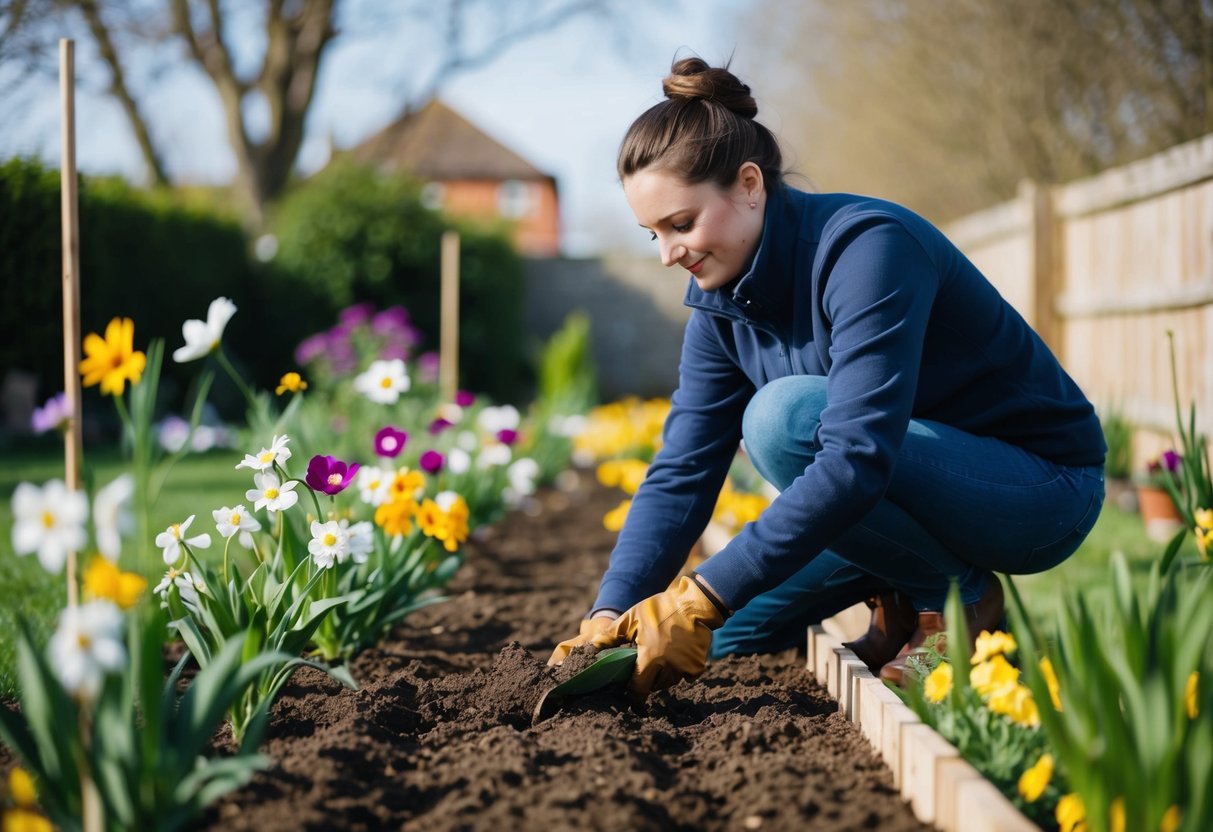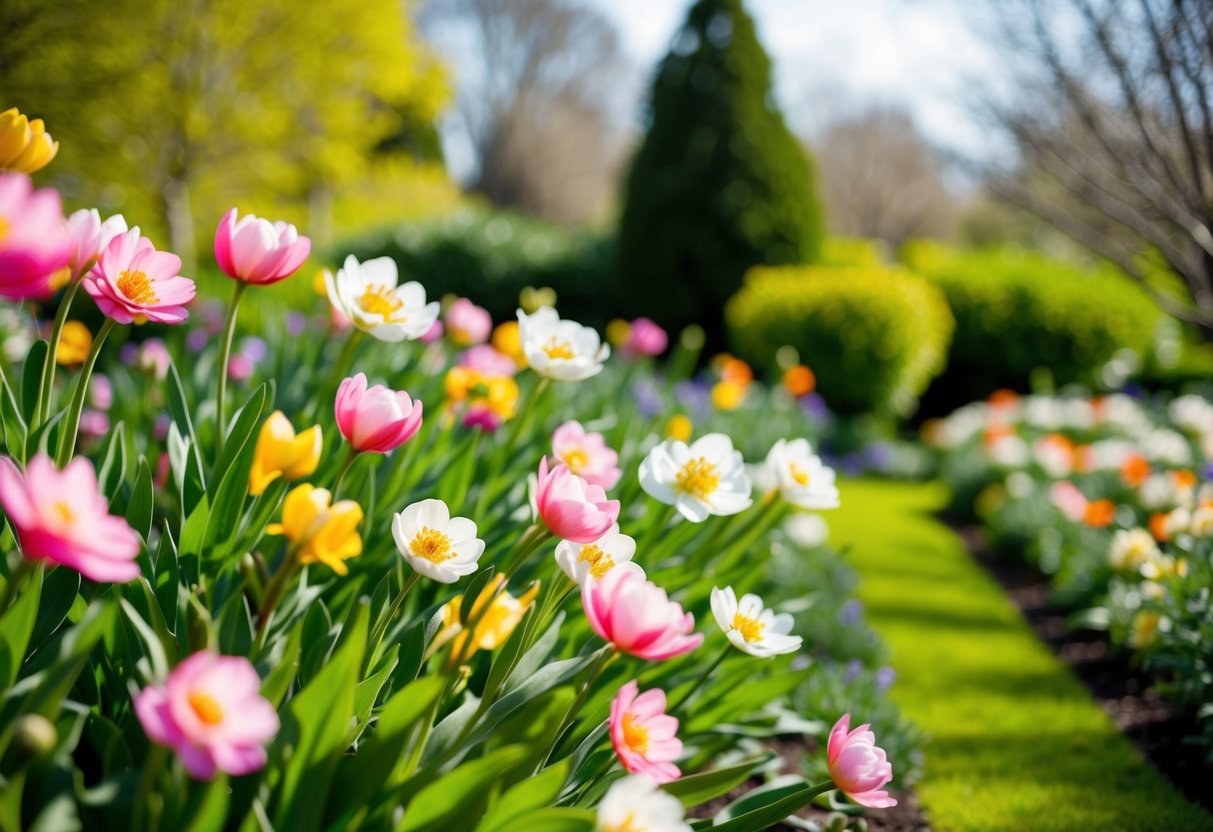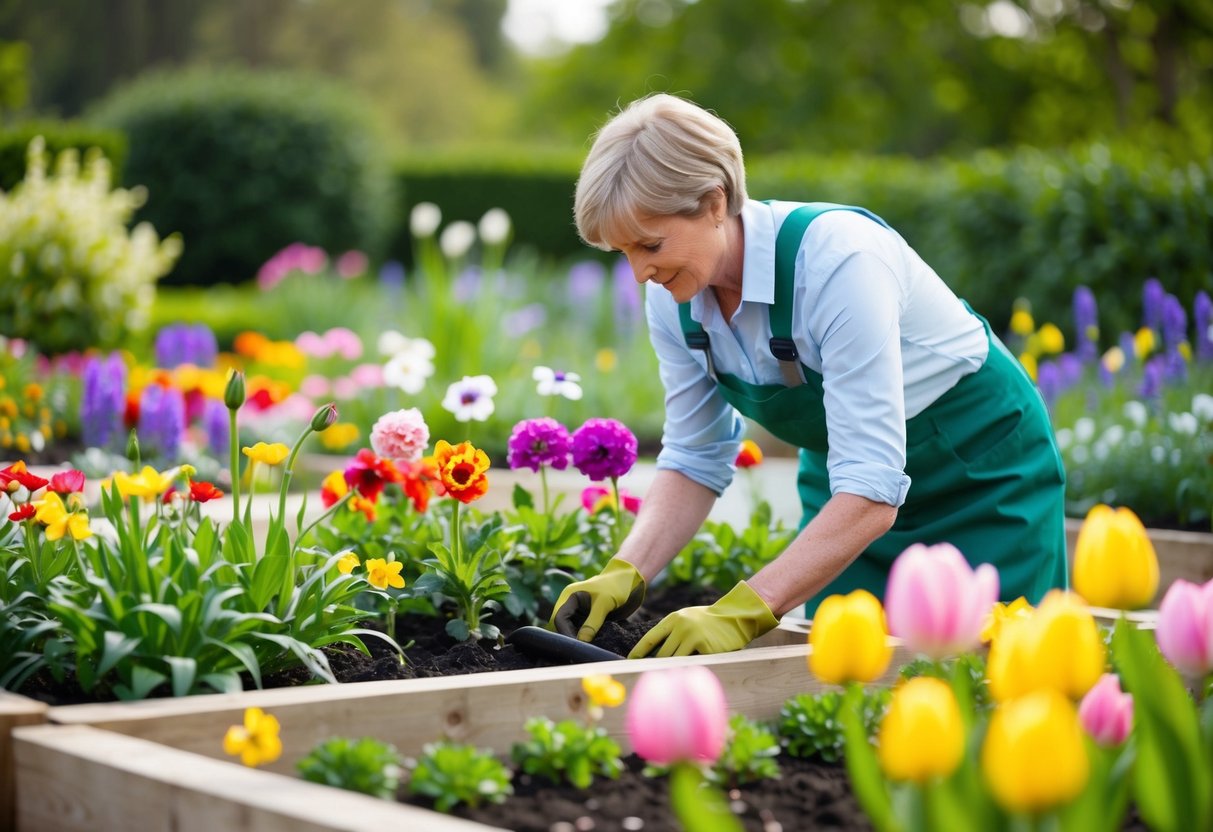What Month Do You Plant Flowers in the UK? A Seasonal Guide
Planting flowers in the UK can be a delightful task, opening up opportunities to enjoy a colorful garden throughout the seasons. March is often the time to start sowing seeds for summer blooms such as marigolds, which can be planted directly into the ground after making sure the area is free of weeds. By understanding when and what to plant, you can ensure that your garden will flourish.

Following a planting calendar can be incredibly beneficial, helping you plan for each month and ensuring you don’t miss the ideal times for different flowers. This approach allows you to include a mix of flowers, fruits, and even vegetables, creating a well-rounded garden that changes with the seasons. Take the time to learn which flowers thrive in each part of the year, like dahlias and rudbeckias in June, as this knowledge can lead to a lush and vibrant garden.
Gardening is a relaxing hobby that can be done throughout the year with the right planning. Whether you’re adding bright flowers to window boxes or creating a beautiful flower border, knowing what to plant and when is key. With a month-by-month approach, you can enjoy a thriving garden that enhances your outdoor space and supports local wildlife.
Understanding the UK Planting Seasons

Planting flowers in the UK depends on the seasons and the type of flower bulbs you have. Each season provides the perfect opportunity for planting specific flowers to bring vibrant colors to your garden at different times of the year.
Spring-Flowering Bulbs
Spring-flowering bulbs are usually planted in the fall. These include popular choices like daffodils, tulips, crocus, and hyacinths. The cold winter months help bulbs develop roots, ensuring they bloom beautifully come spring.
You should plant these bulbs in well-drained soil, preferably somewhere sunny. Planting depth matters, so aim for about twice the height of the bulb. For instance, plant a daffodil 4-6 inches deep. Remember to water them after planting to help start root growth.
It’s a good idea to plant a variety of these bulbs for a continuous splash of color throughout spring. Mix daffodils and tulips to enjoy a lively garden as the warmer months begin.
Summer-Flowering Bulbs
Summer bulbs like lilies and gladiolus should be planted in the spring once the danger of frost has passed. These flowers thrive in warm temperatures and enjoy plenty of sunlight.
Prepare your garden by choosing a spot with well-draining soil and full sun. Dig holes about 4-6 inches deep, placing the bulb with its pointed end facing upward. Water them thoroughly to promote strong growth.
Summer-flowering bulbs can add height and texture to your garden. Consider grouping different types together for an impressive display. Using mulch can help retain moisture and suppress weeds around your bulbs.
Fall Planting for Spring Blooms
To ensure vibrant blossoms in spring, you should focus on planting bulbs like snowdrops and crocus in the fall. These blooms are often among the first to appear as winter fades away.
Select a location with partial shade or full sun. Plant these bulbs around 3 inches deep and 3 inches apart. This spacing will allow each plant to grow without competing for nutrients.
Water your bulbs after planting to help them settle. They will remain dormant through winter, preparing to surprise you with bright flowers as spring arrives. Incorporate a mix of early and late bloomers to enjoy a succession of colors.
Selecting the Right Flowers for Your Garden

Choosing flowers for your garden involves understanding different types, like perennials and annuals. Each type offers unique benefits, beauty, and timing for planting. Consider climate, soil, and sunlight to create a thriving garden.
Perennial Favorites
Perennials bring lasting joy to your garden as they return each year. These flowers are ideal for creating a stable base in your garden design. In the UK, perennials like rudbeckia and dahlia are popular choices. They offer vibrant colors and can thrive with proper care.
Perennials usually require less maintenance once established. They often start flowering in spring or summer, depending on the species. Plan ahead to ensure they have enough space to grow and flourish. You might find them in various forms, including bedding plants or flower seeds, which can be planted in pots or directly into garden beds.
Charming Annuals
Annuals provide a splash of color that lasts for just one season. This quality makes them perfect for filling gaps or changing the garden’s look each year. Annuals like begonias are favorites for their rich, varied colors and ease of growth. These flowers are often planted in late spring after the risk of frost has passed.
Many gardeners choose annuals for their vibrant and diverse blooms, suitable for both borders and containers. These plants can be grown from seeds or purchased as young plants. Including a range of blooming times will keep your garden colorful throughout the growing season.
Preparation and Planting Techniques

Getting your garden ready for planting is crucial. It ensures your flowers grow strong and healthy. Focus on good soil preparation, learn how to plant bulbs correctly, and care for your seeds and seedlings.
Soil Preparation and Drainage
Proper soil preparation is key for healthy flowers. Start by clearing any weeds or debris from your garden. Add garden compost to enrich the soil with nutrients. This improves the soil’s texture and helps retain moisture while providing essential nutrients.
Ensure your soil has good drainage by adding materials like sand or fine gravel. This prevents water from collecting around the roots and causing rot. Well-drained soil is critical for flower health, especially for bulbs.
Use a simple test to check your soil’s drainage: Dig a hole about one foot deep and fill it with water. If it drains within an hour, your soil is suitable for planting. If not, consider adding more sand or compost.
How to Plant Bulbs
Planting bulbs is a rewarding task. Choose a spot with well-drained soil. Dig holes that are two to three times the height of the bulb. This gives them enough space to grow properly without being crowded.
Place the bulb with the pointed end facing up. If you’re uncertain, plant them on their side. Cover the bulbs with soil, pressing gently. Water them thoroughly to settle the soil around them.
Bulbs usually need a period of cold to flower well, so planting in autumn is often best. They will establish roots in fall and grow in spring. Keep an eye on the weather and adjust your planting time if necessary.
Seeds and Seedlings Care
Caring for seeds and seedlings ensures they grow strong. Start by planting seeds at the right depth, usually about twice the seed’s diameter. Cover them with a thin layer of soil. Water gently so they don’t wash away.
For warm soil, seeds germinate faster. If you start indoors, use a seed tray with good drainage and a clear lid to maintain warmth and moisture. This setup creates an ideal environment for early stages of growth.
As seedlings grow, soil preparation remains essential. Provide enough light and rotate them occasionally so they develop evenly. Gradually introduce them to outdoor conditions before transplanting to prevent shock.
Essential Gardening Tips for Flower Growth

To help your flowers thrive, focus on controlling pests and diseases while ensuring optimal watering and feeding. Both steps are crucial for keeping your flowers like geraniums and marigolds healthy throughout the seasons.
Combatting Pests and Diseases
Pests can ruin your garden, so keeping them at bay is important. Common flower pests include aphids and slugs. Use organic solutions like neem oil or consider introducing ladybugs to your garden, as they eat pests like aphids. Regularly check the undersides of leaves for any signs of insects.
Diseases, such as fungal infections, can also affect flower health. Ensure good air circulation around your plants by not planting too closely. If you spot signs of disease, remove affected leaves or blooms promptly. Maintaining a clean garden will reduce disease spread.
Optimizing Watering and Feeding
Proper watering and feeding will keep your flowers, like marigolds and geraniums, blooming beautifully. Water deeply once or twice a week, depending on weather conditions. Ensure your plants aren’t waterlogged, as this can lead to root rot.
Incorporate a balanced flower fertilizer every few weeks during the growing season. For cactus or shrubs attracting fewer pests, a specialized mix can enhance growth. Remember, each plant type has unique needs, so read care instructions for specific advice. Adjust fertilizers based on plant requirements for healthier blooms.
Beyond Flowers: Complementing Your Garden

Adding more than just flowers can make your garden thrive. Consider integrating vegetables and fruits for a practical touch, and shrubs for year-round appeal. This mix can enhance both the beauty and function of your garden.
Integrating Vegetables and Fruits
Including vegetables and fruits in your garden not only boosts its visual appeal but also provides fresh produce. Incorporate vegetables like tomatoes and lettuce for varied textures and colors. These can be planted in neat rows or mixed among your flower beds to create interesting contrasts.
Try planting small fruit bushes such as strawberries or blueberries. These can offer lovely blooms in spring and delicious fruits in summer. You can even use containers to save space and make maintenance easier. Plus, fruits and veggies attract beneficial insects, supporting your garden’s ecosystem.
Creating Year-Round Interest with Shrubs
Shrubs offer structure and interest throughout the year. Consider evergreen shrubs like boxwood or holly. These provide greenery even in winter and serve as a backdrop for flowering plants.
Incorporate flowering shrubs such as azaleas or hydrangeas for seasonal color. When choosing shrubs, think about their different heights and growth habits to create a dynamic landscape. Using shrubs also provides shelter for wildlife and adds depth to your garden design.
By carefully selecting and combining these plants, you can create a garden that’s both beautiful and functional all year round.







